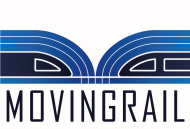MOVINGRAIL:
MOVING BLOCK AND VIRTUAL COUPLING NEXT GENERATIONS OF RAIL SIGNALLING
ABOUT MOVINGRAIL
The project will assess operational procedures and advanced testing methods for ETCS Level 3 Moving Block signalling, as well as communication technologies and market potential of Virtual Coupling.
The project will analyse the application of Moving Block and Virtual Coupling signalling considered as the most promising technologies for increasing line capacity and reducing wayside life-cycle costs. The two concepts are in a different stage with Moving Block being an established standard in ERTMS/ETCS Level 3 and metro systems, while Virtual Coupling is still in the conceptual stage. Both signalling approaches are based on train-centric solutions using position information from the trains rather than train detection information from tracks. They differ in the fact that Moving Block allows train separation based on an absolute braking distance between trains, while Virtual Coupling enables a relative braking distance incorporating the braking behaviour of a leading train.
Within the MOVINGRAIL project, the carefully selected consortium members will build on existing European and national research projects to bring together technologies and concepts that will significantly boost innovative and cost-efficient technologies and systems for railway signalling. In order to develop the project, the consortium decomposed the high-level aims documented in the project Call and the technical ambition for the TD2.3 Moving Block and the D2.8 Virtual Coupling detailed in the Shift2Rail Multi-Annual Action Plan, to identify the key objectives that will help overcome existing barriers to innovation and introduce innovative methods, technological solutions and validation processes to Moving Block and Virtual Coupling





